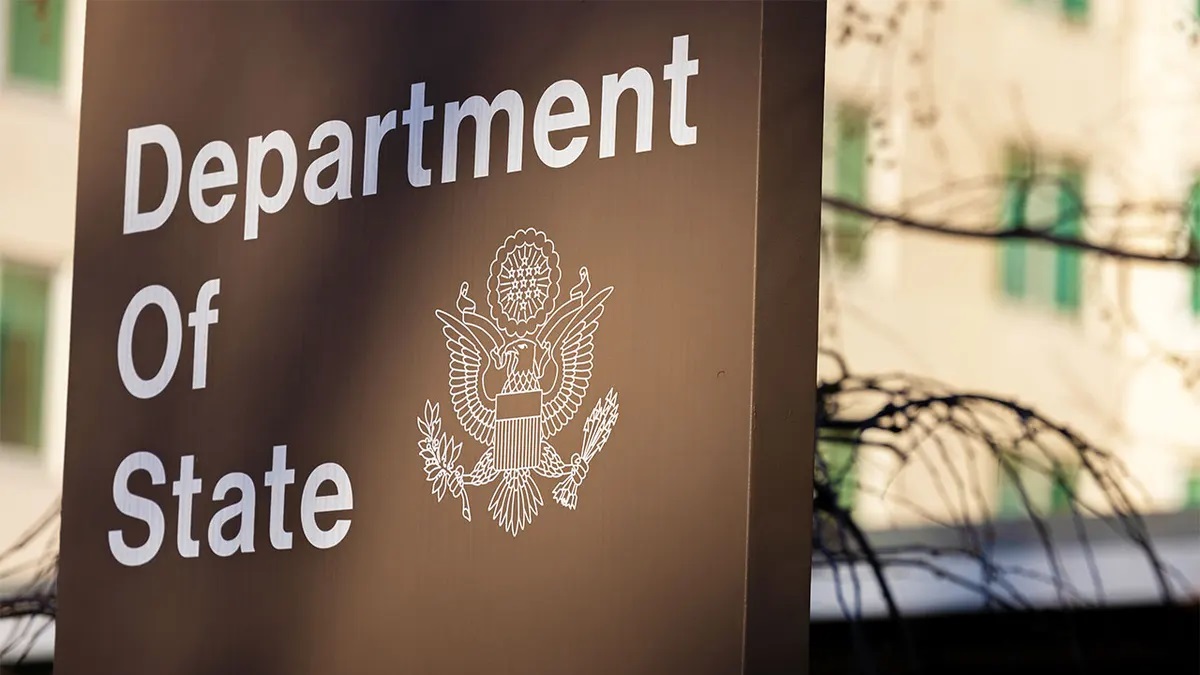The U.S. State Department has begun laying off over 1,300 employees as part of a broader reorganization effort that will ultimately reduce the agency’s domestic workforce by nearly 3,000.
The move, aligned with President Donald Trump’s “America First” policy, aims to cut redundancies and reshape the department’s operations to focus more on domestic interests and less on international engagement.
Critics argue the layoffs, particularly those affecting refugee, human rights, and foreign assistance offices, could severely undermine American diplomacy and violate congressional mandates.
Largest Layoff in Department History

According to internal documents obtained by CBS News, the layoffs—termed a reduction-in-force (RIF)—include 1,107 civil service employees and 246 foreign service employees. These job cuts began Friday following a notice to employees and are part of the department’s plan to reduce its U.S.-based workforce by 15%. An additional estimated 1,600 employees accepted a voluntary departure earlier this year through a program dubbed “Fork in the Road.”
The State Department confirmed that impacted civil service officers will be separated within 60 days and foreign service officers within 120 days. According to Deputy Secretary of State Michael Rigas, the restructuring is meant to eliminate duplication and streamline agency functions, including consolidating offices responsible for sanctions, human resources, and finance.
However, the reorganization also includes the closure or merger of dozens of domestic offices, particularly those involved in foreign aid, refugee admissions, and human rights—offices many in Washington believe are vital to U.S. foreign policy.
Legal and Political Blowback
The sweeping layoffs come just days after the U.S. Supreme Court paused a lower court ruling that had temporarily blocked the Trump administration’s federal workforce reduction efforts. This legal green light opened the door for the State Department to move forward with its plan, despite warnings from lawmakers and legal observers that such cuts may conflict with congressionally mandated appropriations and federal employment protections.
U.S. immigration attorney Akua O. Aboagye has offered the following explanation:
“The primary goal of this move is to reduce the department’s domestic workforce by 15 percent and to align its operations with President Donald Trump’s ‘America First’ policy, which emphasizes prioritizing U.S. interests over international engagements.”
Members of the Senate Foreign Relations Committee, all Democrats, issued a strongly worded letter to Secretary of State Marco Rubio condemning the move:
“During a time of increasingly complex and wide-spread challenges to U.S. national security, this administration should be strengthening our diplomatic corps… not weakening it.”
Senator Tim Kaine (D-Va.) described the move as a “willy-nilly effort to sack a whole lot of people” without a strategic plan, raising alarms about its potential legal implications and long-term impact on global diplomacy.
Human Rights, Refugee, and Afghan Evacuation Programs Gutted
Among the most significant concerns are the programs that were most heavily impacted. The Bureau of Population, Refugees, and Migration’s admissions office, which runs the U.S. refugee resettlement program, was nearly wiped out, despite being tasked with the White House’s priority program for South African Afrikaners.
The Bureau of Democracy, Human Rights, and Labor’s global programs office, which manages 391 active grants, was eliminated without notice on the fate of its initiatives. Meanwhile, all senior staff of the Coordinator for Afghan Relocation Efforts (CARE)—which has resettled nearly 200,000 Afghan allies—were laid off. According to advocacy group AfghanEvac, one CARE team member was notified of her dismissal just 12 hours after giving birth.
There are still an estimated 1,400 Afghan refugees and SIV holders at a U.S. base in Qatar awaiting processing. Many are classified as refugees and thus restricted by the Trump administration’s executive order limiting refugee admissions.
Reorganization or Retrenchment?
State Department officials maintain the restructuring is focused on “streamlining bureaucracy” and improving efficiency. A senior official stated the Political Affairs bureau and other region-specific desks are “largely unaffected.” However, entire offices involved in environmental policy, multilateral diplomacy, and human rights advocacy were dismantled.
Former deputy director Jose Mercado, a 29-year veteran of the Bureau of Democracy, Human Rights, and Labor, called the reorganization “a sad day for foreign policy.”
“This did not make us stronger, this made us weaker,” Mercado told CBS News.
The American Foreign Service Association (AFSA), which represents U.S. diplomats, warned that the cuts are “untethered from merit or mission” and could harm the U.S.’s international credibility.
“They target diplomats not for how they’ve served or the skills they have, but for where they happen to be assigned. That is not reform,” AFSA said in a statement.
Legal Questions Ahead
As critics decry the lack of transparency and planning behind the layoffs, legal experts are questioning whether the State Department has complied with federal reduction-in-force procedures, including requirements under the Civil Service Reform Act and the Foreign Affairs Manual.
Moreover, the elimination of offices handling congressionally mandated grant programs and foreign aid raises potential legal challenges related to separation of powers and unilateral executive action over appropriated funds.
Congress had previously warned the Trump administration that it lacked the authority to shutter the U.S. Agency for International Development (USAID)—yet the reorganization now places many of its responsibilities within the State Department, triggering further scrutiny.

